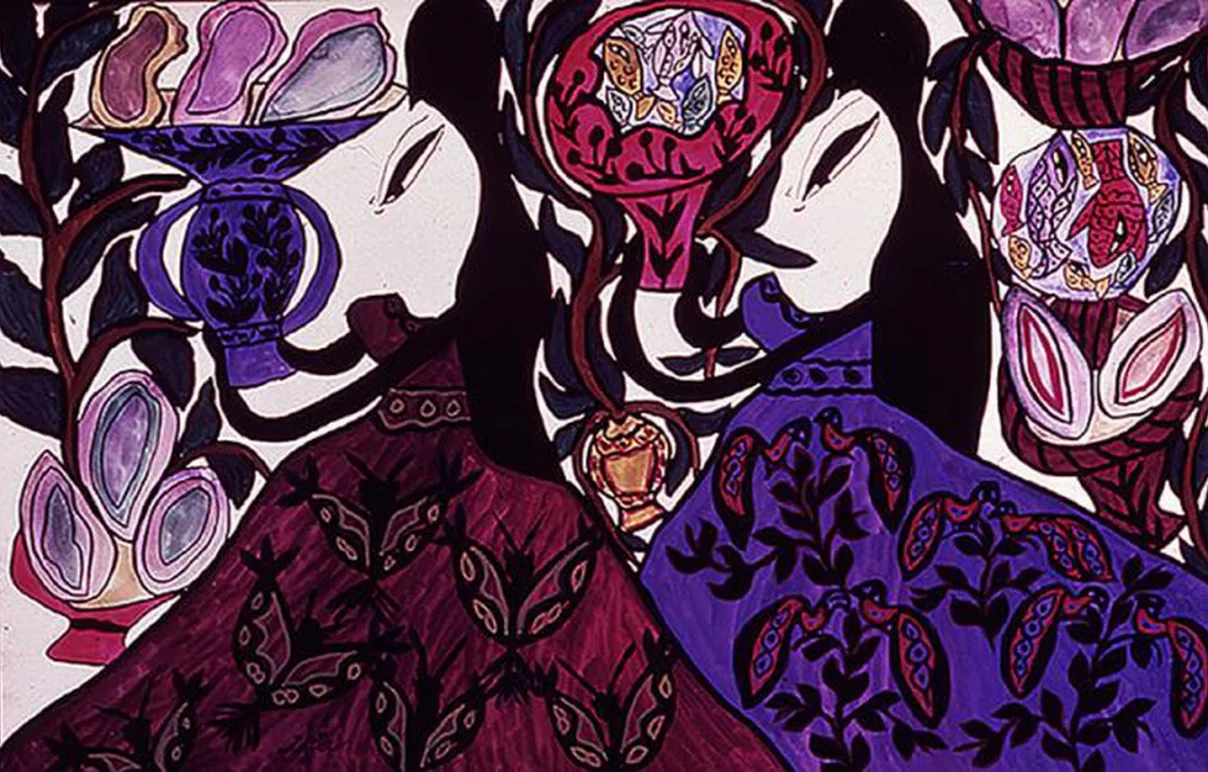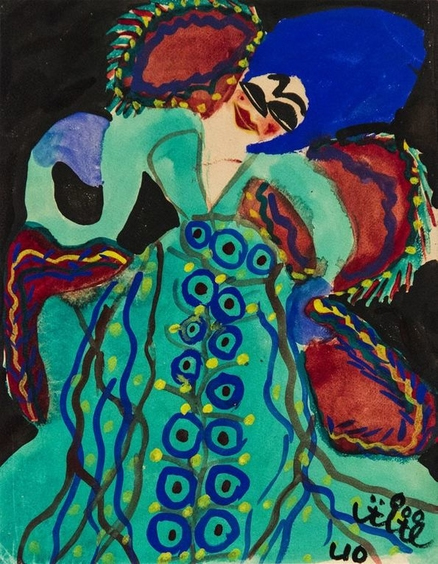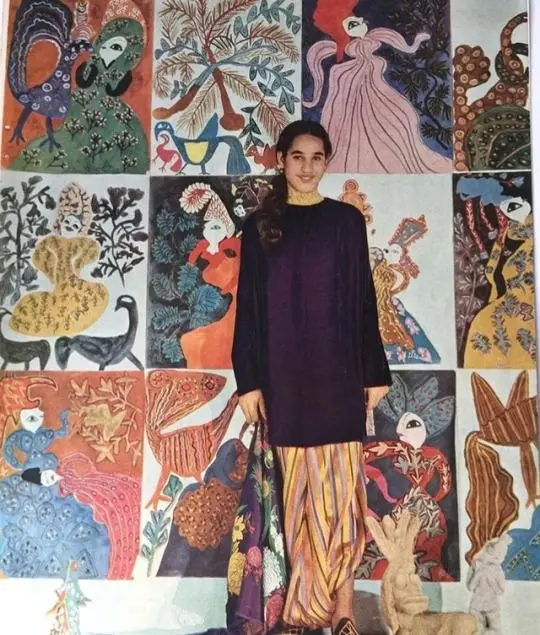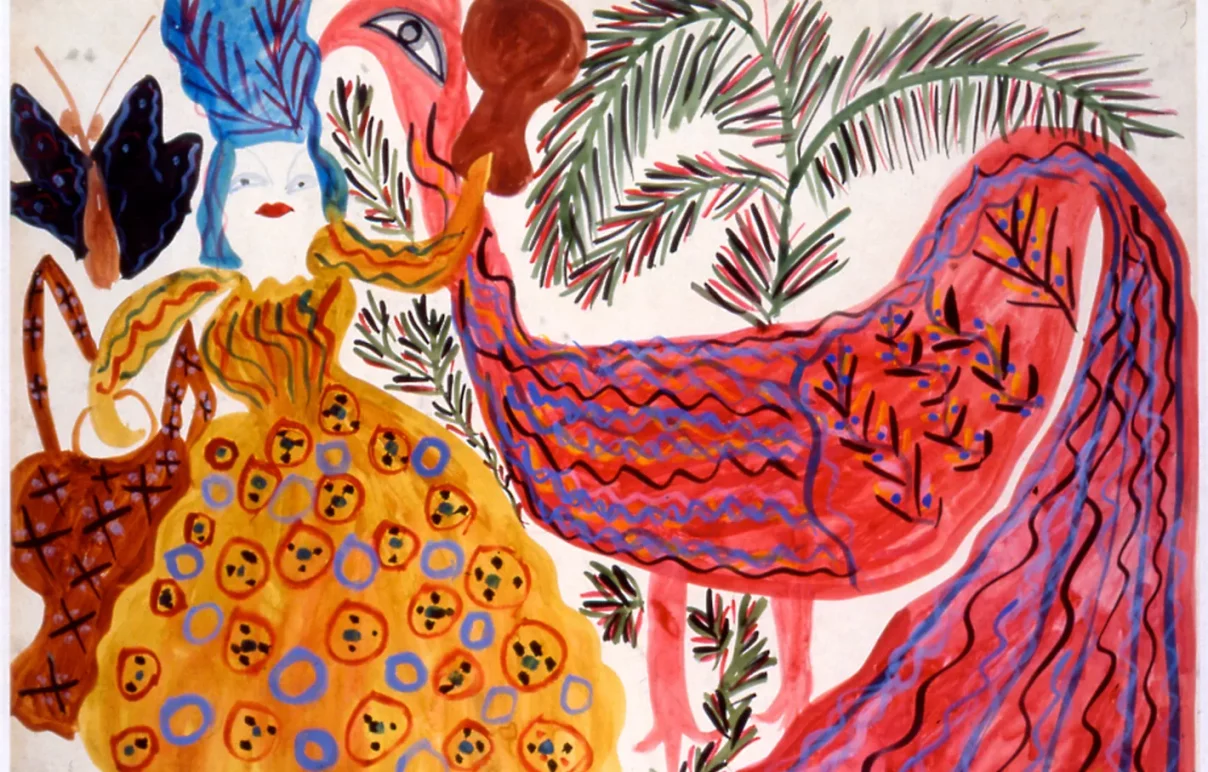
“Femmes Portant Des Coupes,” gouache on paper.
Image courtesy of: The Culture Trip
This year Venice Biennale’s was an opportunity for many visitors to see Baya Mahieddine’s paintings for the first time. The Algerian artist was one of the 213 artists selected to participate; she is among the 180 artists making their biennale debut. The majority of artists represented this year are female artists; however in addition to that, Baya is unique in that she made a big impression on the progressive and forthcoming 1940’s Paris art scene.

“Femme à la robe verte (Woman in a green dress),” 1940. Gouache on paper. This is one of the paints that was exhibited at the 1947 exhibition at Galerie Maeght.
Image courtesy of: Architectural Digest Middle East
Subjected to a difficult childhood, Baya (as she preferred to be called) was orphaned at five years old; subsequently, she was raised by her grandmother. Unable to attend school because the household needed money, Baya was sent to work as a servant for Marguerite Camina. In essence, the French woman became Baya’s adoptive mother and she quickly realized the youngster’s talent. Encouraged to develop her craft, Baya took to developing her own style which was vastly different than many of the Western art models that were being taught and produced at the time; Baya used the influences of her personal experiences and the traditional tribal art of her country as painting references.
Camina introduced the young artists to the works of Braque, Miro, and Matisse. She further opened up an entire world of possibilities for Baya by showing her unique artwork to the French modernist art dealer, Aimé Maeght. Maeght was the owner of a well-known Parisian gallery. Baya’s first solo exhibition took place at Galerie Maeght in 1947; she was 17 years old at the time.

A young Baya photographed wearing traditional Algerian attire and shoes with a number of silk “squares” featuring her patterns hanging above. Courtesy of an interview in Vogue that was conducted by Edmonde Charles-Roux, this February 1948 edition featured a 16 year old Baya.
Image courtesy of: Why Now
Baya’s first exhibition attracted the attention of André Breton, a Frenchman who is considered the pioneer of Surrealism. Brenton found the bold colors and abstract figures to be reminiscent of dream-like qualities… in essence, surrealism. The same 1947 exhibition of Surrealist art also attracted the attention of Pablo Picasso.
Greatly impressed by her natural talent and non-conformist paintings, Picasso invited the young artist to work with him for several summers at the Madoura pottery studio in southern France. The master claimed that Baya was (courtesy of Culture Trip), “the elusive ‘untaught’ artist that gave Picasso fresh perspective.” Picasso’s “Women of Algeria” is a series that was inspired by Baya; on the flip side, there is evidence of Picasso’s influence in many of Baya’s works.

“Femme au panier et coq rouge (Woman with a basket and a red rooster),” 1947. Gouache on board. From the collection of Adrien Maeght, Saint-Paul-de-Vence, France.
Image courtesy of: The Cut
Pinned as a “child prodigy from North Africa,” Baya’s style was befitting of Jean Dubuffet’s definition of “Art Brut:” art by self-taught artists who came to be known outside the academic system. With admirers such as Picasso, Matisse, and Dubuffet, Baya stayed true to her own style rather than adhering to the labels that were placed upon her to explain these newer art styles such as modernism and surrealism.
Typical paintings included red-lipped, smiling women with colorful clothing. Often, the women are shown dancing with their clothes swaying. Bunches of flowers and fruit present a sense of joy and abundance. Birds, animals, and musical instruments also frequent Baya’s paintings. Most important to note however is that men are entirely absent from her canvases.

“Le Paon,” 1945, courtesy of Elmira Gallery, Tunis-Dubai.
Image courtesy of: The National News
Soon after her 1953 wedding to the Andalusian composer Mahyeddine Mahfoudh, Baya abruptly stopped painting. She went on a complete hiatus until the 1960’s. Once she began painting again, it was clear that no matter what, she would remain an Algerian artist at heart.
Baya’s paintings showcase her resolve to proclaiming her Algerian identity even as French colonizers repeatedly tried to impart French culture onto the artist. Despite Algeria’s political upheaval and instability, Baya refused an invitation to move to France… she could not imagine leaving the homeland that inspired her iconic paintings. As events inspire dreams, Baya was clear on her influences. Courtesy of an interview with art historian Salwa Mikdadi for The National News, Baya answered when asked what inspires her, “My dreams. I wake up each morning and I remember these figures from my dreams.”